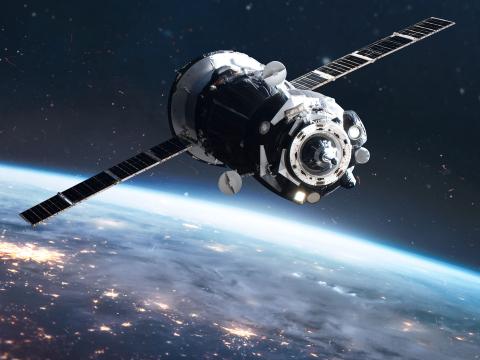Regional Telephone Company Expands Reach, Broadens Services
Telecommunications firm extends connectivity to rural communities, federal agencies and military facilities.
One regional Bell operating company is introducing advanced telecommunications to rural communities to help people in remote locations realize the potential benefits of technology. The company provides wireline, wireless and connectivity solutions to businesses, federal agencies and military organizations both inside and outside of its 14-state region, which covers areas within the midwestern and western United States. The firm also works with many federal agencies, including the General Services Administration, the Department of the Treasury, the Internal Revenue Service and the Department of Energy, to provide voice, data and video equipment, and solutions.
Recently, the company invested $3 billion to enhance its infrastructure, and it is working on several projects to link communities and to expand communications capabilities to various regions within the United States for more efficient communications processes.
Shirley Menish, director of business development and marketing at U S West Federal Services, Washington, D.C., highlights the company’s near-future plans to focus on fiber optic upgrades and expanded wireless capabilities. The company also plans to expand its digital subscriber line offerings to open further work-at-home possibilities and is working to give customers greater access to the Internet.
In the future, Menish comments, U S West will focus on the integration of various types of networks and the ability to work across these networks seamlessly. One project involves delivering telecommunications and Internet access to Indian reservations that are often located in remote areas. In another effort, the company has provided infrastructure upgrades for the New Mexico Army National Guard to allow connectivity that will benefit the state as well. U S West has also worked with the U.S. Postal Service in Minnesota to connect the postal service’s payroll processing center. And, to enhance the virtual workplace of the telecommuter, the company’s Extended Workplace Solutions is available to improve telecommuting opportunities.
The company’s Indian reservation effort is tied to a U.S. government program called Access Native America. This is a project of the Interior Department’s Bureau of Indian Affairs to connect all Native American schools to the Internet and to enable them to interact with each other and the bureau. According to Michael W. Peterson, business development manager at U S West Federal Services, the project will provide frame relay services to the reservations, connecting service in extremely rural areas, including some that did not even have a telephone connection at the program’s inception. U S West is working with local telephone companies to provide telecommunications connections that will offer increased capabilities within the Native American community and will include interconnected local area networks consolidated to create seamless wide area networks. The schools will benefit from being able to allocate bandwidth on demand and will be able to transfer large files, send electronic mail and process many of their forms easily, according to company officials.
Peterson says that the project is particularly challenging because the company faces many issues not typical to the urban environment. As Access Native America reaches rural locations, U S West is working in areas that lack standard street addresses. At the outset, the company must obtain special construction permits to build on tribal land. And, throughout the project, they must work with independent Native American telephone companies and long-distance carriers to interconnect. In many cases, the reservations have copper wiring, and U S West must comb the existing telephone line pairs or look in manholes to locate additional telephone lines as well as relieve burdened routes to make room for more service lines.
Deputy Director of the Office of Indian Education Programs at the Bureau of Indian Affairs William Mehojah agrees that the access program is a “mammoth undertaking.” The connections, he notes, will be installed in 185 schools, which range in size from 50 to 1,000 students. Most of the schools average 250 to 350 students and cover 23 states and 63 reservations from Maine to Florida as well as from Seattle to California. The Navajo reservation alone, Mehojah comments, is roughly equal to the size of West Virginia.
“It’s very complex,” Mehojah says about the project. Some of these schools do not even have telephone service. “The schools are at the end of a road or at the end of a dirt road.” Approximately 30 percent of the buildings that are being connected are at least 50 years old. Some of the buildings are 100 years old and are protected as historical sites with various restrictions. More than 115 schools have been cabled, and about 60 of those schools have already been connected to the Internet. Each classroom will be wired for between two and six connections, and the 54 Native American dormitories that operate within the system will be cabled as well. The bureau plans to have 116 schools connected to high-bandwidth lines by July and hopes to have all the schools connected by next year, according to Mehojah.
The bureau recognizes the importance of connecting the reservations. “Students benefit because they have access to information that they have never had before,” Mehojah says. “Many people in these rural areas cannot afford to get connected in their homes, so the school can serve as the ‘on-ramp’ for Indian communities,” he explains. “The idea of equity is very important to us. These children really would be left behind if they didn’t have access to the Internet.” Mehojah notes that in many locations, the school will provide the only connection to the Internet that the Native American communities will have.
As part of the Access Native America project, the Bureau of Indian Affairs will be able to remotely track students on the reservations and remotely handle various management tasks. The School Statistics Initiative will allow the bureau to maintain student data electronically and use this data for analysis and for scheduling students. Currently, the bureau’s method for tracking statistical data within the Native American schools takes about four months and hence can only be completed a maximum of twice annually. With electronic connections to the schools and the ability to access a school’s database, the accuracy of the process will increase, and the time it takes to complete the analysis will decrease.
In the past, several schools have had direct dial-up connections and the ability to use a bulletin board system called the Educational Native American Network, which is housed at the University of New Mexico in Albuquerque. Now, however, the schools will be able to use the World Wide Web-based system to communicate with other tribes, foster distance-learning programs, increase staff and professional development opportunities, and use video for educational purposes.
Other efforts by the company address the needs of telecommuters. The firm’s Extended Workplace Solutions currently aids approximately 20,000 teleworkers through a web site dedicated to telecommunications issues. Many businesses are signing on, Jim Miller, Extended Workplace Solutions general manager at U S West says. “They have found that it works.” After the initial use of telecommuting, businesses want to expand telework possibilities for their employees and refine their current policies for the practice, Miller states.
The company has been addressing telecommuting needs informally for about five years, Miller says. Now, it is conducting an audit of its telecommuting program in preparation for further development.
The company not only assists businesses and teleworkers in delineating the technology needed to work at home, but it also educates users about policy and management issues related to telecommuting. U S West helps determine how a company might need to change to allow telecommuting, how human resources practices might change when hiring someone for a teleworking position, how a worker’s compensation might change, and how to measure the productivity of a teleworker. The company also helps businesses measure their return on investment from teleworking.
On the technical side, U S West helps businesses determine what the host and end-user sites should look like, the size of the pipe needed, the levels of security and speed required, as well as the need for technical support.
As part of the company’s Extended Workplace Solutions, a telecommuter central web site serves as what Miller calls “an omnibus resource” for telecommuters. Here, telecommuters can obtain advice and tips for exercising telecommuting options.
U S West’s telework solutions entail a “digital anywhere” approach through what the company calls MegaBit service. Currently, 60 cities have access to this MegaBit service, which allows high-speed data transmissions to be sent across U S West’s voice network. The data transfers are then taken off the voice network at the wire center switch and carried over a separate dedicated data backbone, a high-speed, asynchronous transfer mode (ATM) network. Other users can also sign onto the service to obtain voice, data and video connections over existing copper wires at the highest possible speed until upgrades from the company are available. As soon as digital subscriber line capabilities are available, users can tap into this technology to enhance their teleworking possibilities.
In addition, U S West has been working with the New Mexico Army National Guard to provide faster speeds for data transport and to allow video transport as well. The company helped to replace the Guard’s existing T1-based network that connected six primary locations in a daisy-chain ring topology with an ATM-based network.
With the T-1 network, data traffic was limited to 56 kilobits per second at approximately $14,300 per month, and the network did not support video and advanced data applications. U S West’s ATM-based cell relay service provides a 10-megabits-per-second, variable-bit-rate virtual circuit connection at each location, with Santa Fe serving as the primary hub for data transport. This ATM configuration reduced the Guard’s monthly bill by 24 percent, allowing the Guard a more than 17,000 percent increase in data transmission bandwidth. Each location retained an extra 31 to 101 megabits per second of unused bandwidth that could be used for other applications.
This expansion of resources has served the Guard in the state of New Mexico by providing the infrastructure for distance learning to provide training for Guard members in remote areas. Other potential applications include better access to government and telemedicine services and advanced economic opportunities.
U S West is also responsible for maintaining connectivity for a U.S. Postal Service data center located in Minneapolis. In one of only two payroll centers of its kind run by the postal service, MCI is providing data services, while AT&T is delivering voice capabilities to the center. U S West is the local carrier for the center and has been charged with ensuring that its system never goes down.
This project began two years ago and the system was installed last July. It offers redundant synchronous optical network (SONET) connectivity with information coming into the building from two central locations. The system has the capacity to grow—up to an OC-12 capacity.
The company’s Internet services group is reaching out to consumers and small business users, resulting in a subscriber list that is growing by about 20,000 users per month. “We are growing very rapidly,” offers Jane Morrison, director of product and markets management, Internet services group, !nterprise Networking Services at U S West. Offered within the company’s region, the U S West network service provides its subscribers with 2 megabytes of storage space and two electronic mailboxes. A special package available for small- and medium-sized businesses allows 5 megabytes of personal space and five electronic mailboxes. The U S West network supports 56 kilobits per second and digital subscriber line connections and can implement a worldwide roaming option to dial into local numbers to access the service while traveling.
As the service continues to grow, the company wants to expand its access speed. U S West also will increase its distribution methods to allow customers to obtain the service from a variety of locations or to download it from the web.




Comments